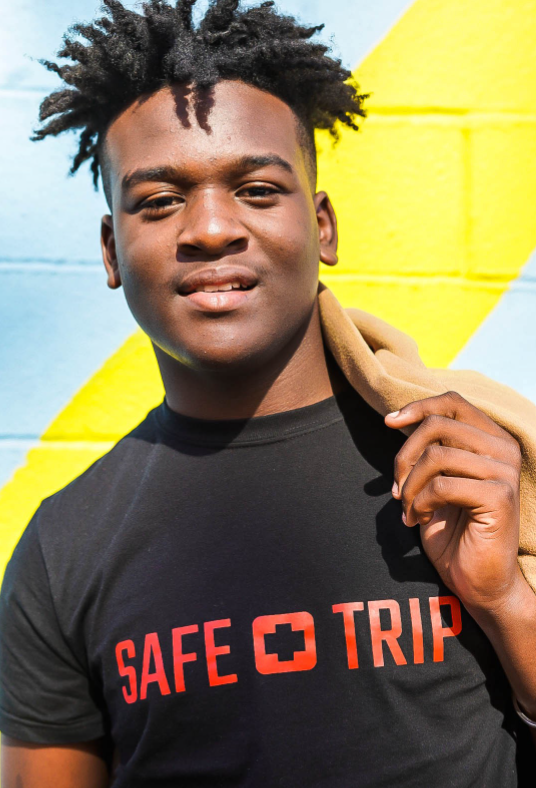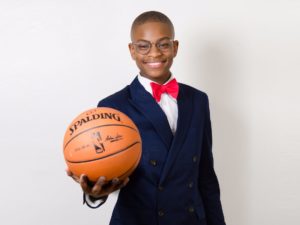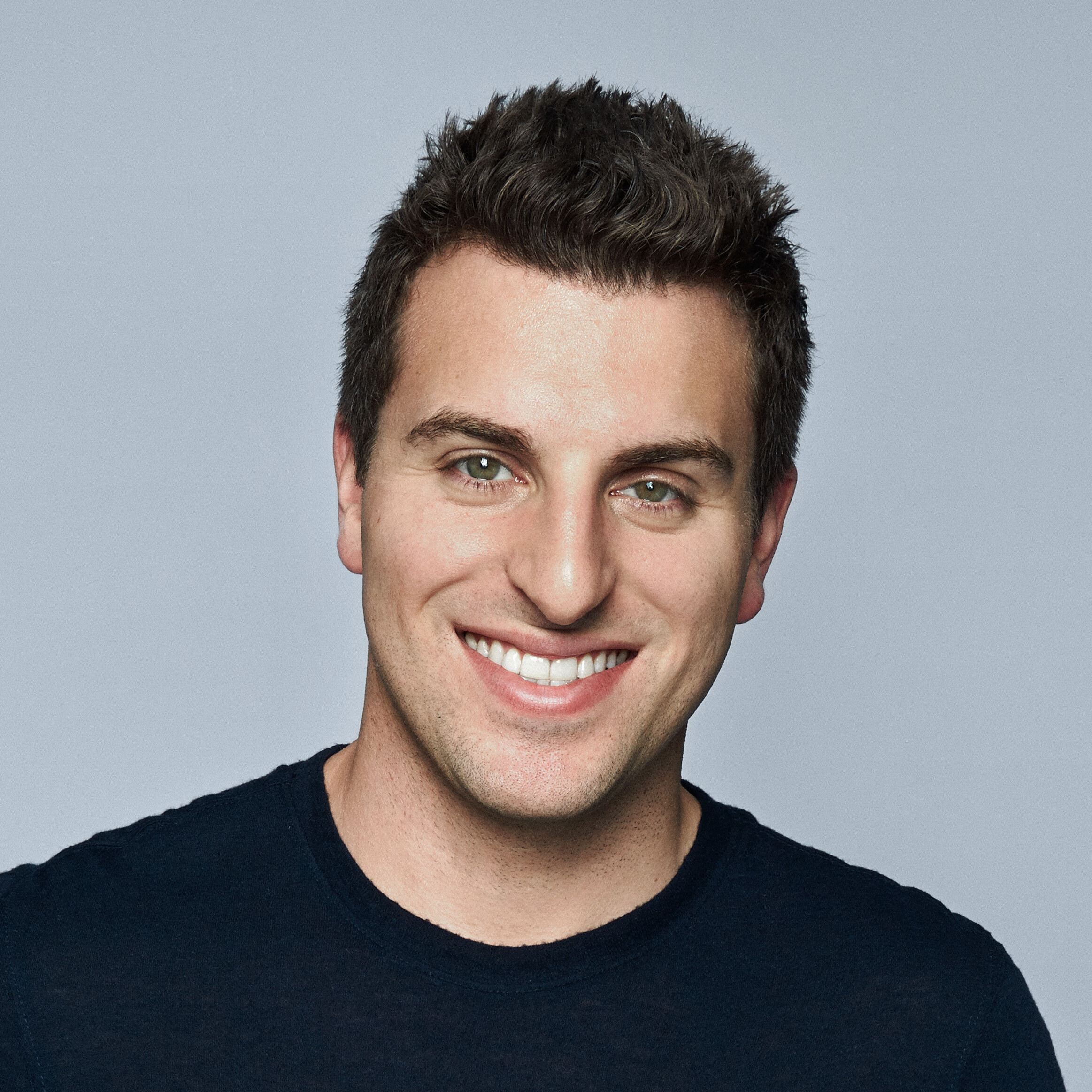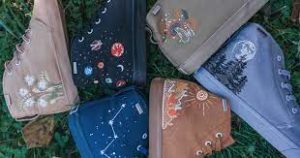- Langston Whitlock is another young entrepreneur who started his own business at the age of sixteen. He is taking the tech world by storm as he is the co-founder and CIO of SAFETRIP, which is the world’s first healthcare transportation mobile app and digital platform. With this app, Whitlock’s patented technology can allow users to book non-emergency and emergency medical transport. It also gives the user an option to pay for services using their insurance. Although he is one of the youngest entrepreneurs in this industry, he says he does not let his age deter him from his goals. The one thing he talks about is how he had a good support system because the people around him trusted his skills. The way SAFETRIP was created was that another person named Ja’Nese Jean saw a homeless veteran who didn’t have access to healthcare. Ja’Nese Jean brought on Langston Whitlock because she knew about his skills and talent. This goes to show how good Langston is at coding because SAFETRIP has raised two million dollars in funding. What was inspiring about Langston’s story was how he started to learn coding at the age of 12. He did it by building an anonymous messaging app to contact his absent father. He says that project is what helped guide him toward his greater purpose which is what he is currently doing with SAFETRIP. His message to other people was to always have faith no matter your circumstance because God has a plan for everyone. Although Langston did not come up this idea, I thought it was very impressive to see how talented he was in the tech industry to lead him where he is at today.

Archive for Young Entrepreneur – Page 7
There are few young entrepreneurs as successful as Jimmy Donaldson, the Gen Z behind MrBeast. Jimmy began posting videos on YouTube in 2012 at the age of 13. He began his channel by making Minecraft videos, but soon expanded to different genres. As he continued to make videos, he continued to fall in love with it. As he continued to create, he sought to understand the YouTube algorithm. Soon he began to find success and has since exploded in his brands. Today, he has 18 different YouTube channels along with channels on many other content platforms. On top of those, he has a successful merchandise brand, an international fast-food resturaunt called MrBeast Burger, and a chocolate company called Feastables.
Jimmy’s main YouTube channel has now surpassed 104 million subscribers and continues to grow. What is so special about him and interesting to his business model is that he reinvests almost all income into future ventures. This has found tremendous success as all of his brands continue to grow. He has been able to sustain this growth through his incredible innovation. Jimmy may understand the YouTube algorithm better than any other content creator, and his marketing has created great success for his physical products. He has inspired countless content creators to structure their brands differently and tailor their content to target audiences. It may be obvious through his content, but Jimmy is very driven by money. He appeared on a podcast, Impaulsive, and stated that his goal is to be the first “YouTube billionaire.” His drive is making money and using it to encourage others through this philanthropy. His brands, from products to content, have seen tremendous return on investments and he continues to reinvest his earnings into his assets.
MrBeast has taught me many principles within entrepreneurship. First, he has taught me passion. It is clear in all that he does that he is incredibly passionate about the content he creates and the products he sells. Second, he has taught me creativity. Jimmy is constantly coming up with bigger and better ideas and they always deliver to his viewers. His content is undeniably creative and entertaining and that reflects in his channel statistics. Third, he has taught me to do the impossible. He does not confine himself to what may only be attainable. He goes beyond and pushes the limits of what is feasible.
Jimmy Donaldson has found incredible success through his many ventures, and is only continuing to grow. He is arguably the most successful Gen Z entrepreneur and I am excited to see what he creates next. He is a great model entrepreneur for our generation and his strategies should be learned from. How much bigger can the MrBeast empire get?
SoundMind: An App by Travis Chen and Brian Femminella
https://www.businessinsider.com/soundmind-gen-z-founders-pandemic-stress-trauma-solution-2021-11
Travis Chen and Brian Femminella acknowledged how there was a lack of trustworthy mental health resources, and so they decided to come up with an app called SoundMind, which uses music to help reduce anxiety for individuals. Both of these individuals battled immense challenges in their personal lives, and they used them as inspiration to try to provide resources for other people. They created an online environment for people to have crucial mental health resources, and have a sense of community for others who understand the struggles that they are going through. They plan to expand their app even further to allow creators to upload their own sounds, along with commission opportunities.
Ryan Hickman may well be the youngest entrepreneur in the market today. At only 3 years old his whole life changed with a little consideration for the environment. As a 3 year old he had more entrepreneurial creativity than many people do in their thirties. He began by picking up bottles around his neighborhood because he didn’t like the look of the trash in the streets and parks. This began an explosion of ideas and only 8 years later he is a worldwide sensation. An 11 year old kid has his own recycling and clean up business including weekly beach clean-ups, donating money to marine mammal rescue efforts and raising awareness for the environment. His drive comes from his love and passion for the environment which is more noble of a cause than many, and that should be an inspiration to anybody looking to be an entrepreneur. He is an 11 year old kid doing more for our world than just about anybody, let alone 11 year old kids.
Ryan owns and runs “Ryan’s Recycling” but also just released a new non-profit “Project3R” which is focused on recycling education. At only 11 years old this kid has multiple companies, both commercial and social and is only growing. Ryan is the perfect example that a small idea can build a huge company. His quick action of picking up some trash out of the street led to multiple well known companies spanning across the entire nation helping make our world a little cleaner. His business plan includes the expansion from recycling is an incredibly safe plan, as the recycling business is still being explored. Branching out has allowed him to get grips on other markets so he doesn’t rely on recycling alone. However, with his foothold in the still unexplored business of recycling he can forge a new path and be the first to revolutionize and change the business for the better. Ryan is an incredible kid, being only 11 years old with two separate businesses, cleaning up the Earth piece by piece.
Have you seen these shoes?
These are BANGS Shoes, created by Hanna Davis. After teaching in China, she noticed the green canvas work shoes worn by locals and was inspired to create change. She came up with the idea to use shoes to help workers provide for their families and build self-sufficiency in other countries. Backed by her family, she was able to invest in an initial shipment. She had a website, business cards, and a model. She paid the manufacturing fee and was delivered no product. As she started over and began to save again, she worked as a bartender. One night she struck up a conversation with an elderly couple who took an interest in her. They began to ask her about herself, and Hanna began to grow uneasy at the targeted questions, not wanting to disclose the specifics. She took down their information and later that week, decided to look him up. The man turned out to be a retired VF executive. VF is a corporation that owns outdoor adventure and apparel companies such as Vans, Supreme, The North Face, Jansport Dickies, and more. Two months later, George and Gayle Darrah become signed investors and business partners.
BANGS Shoes comes from the Chinese character “to help” and the brand prioritizes self-sufficiency. They source their materials ethically and employ the working class to help manufacture their products. They then take 20% of their profits and loan them through a non-profit to help other entrepreneurs get started. They have helped over 5,000 entrepreneurs in over 12 different markets in 79 countries.
Today, BANGS can be found all over Instagram, promoting outdoor adventure, encouragement, and positivity. Their unique shoes are a talking point and a casual staple in closets. On their webpage, they feature which rotates to highlight one of their entrepreneurs. Another section, titled “15 Things You Can Do Right Now” encourages movement and connection. Through its mission statement and engagement with customers, the brand effectively uses its platform to help others and create positive change in local economies.
If you would like to check them out you can find their Instagram Here
Or click to view their Website.
Garrett Gee was a 21 year old student attending Brigham Young University in Utah when he saw that there was a new iPad launching back in 2011. Gee had already been thinking about how bad the current QR code scanning apps were and saw this as an opportunity to be one of the first people to create an app for the iPad 2 that was compatible and useful. Garrett did this under the assumption that Apple would post their top 10 apps for the new device like they had in the past and, when it came out, he spent two sleepless nights in a row to make a properly functioning QR code scanner and titled it “Scan”. Sure enough, quickly after the iPad was out, he made it onto that list of apps. Gee then took this to Shark Tank where he quickly was rejected, however, he did not stop there. Garrett kept developing the app and soon after the rejection of the Sharks, he was offered 54 million dollars to sell his app to snapchat. Garrett Gee is a great example of a risk taking entrepreneur that didn’t give up, but rather, found ways to pivot until he succeeded!
Hart Main was 13 years old when he saw his sister selling “girly scented” candles for a school fundraiser and decided to tease her about candles being so girly, however, that sparked an idea. He very quickly developed the idea of a candle that has scents catered to men and called it the Man Can. Main and his parents didn’t have too much money to put into the idea, so they started using soup cans to fit the candle inside and still uses them to this day. Harts business quickly blew up and, at age 17, has now been making 6 digit figures annually for the past 3 years and the numbers are only going up. Main has not been keeping all of this money for himself though, rather, he donates a portion of it to community kitchens in Ohio, Pennsylvania, West Virginia, and Michigan. Hart Main is a great example of an entrepreneur that didn’t just let an idea sit in the back of his mind, but rather, he acted upon it and the payoff of that action was much more than he ever could have anticipated!
 19-year-old engineer Langston Whitlock is the co-founder of Safetrip, the world’s first healthcare transportation app geared towards helping the homeless & elderly. The app allows patients, caretakers, and health care providers to book non-emergency and emergency medical transportation. Users are offered premium vans, cars, wheelchair accessible vehicles and ambulances and have the option of paying with insurance. Safetrip, based in Georgia, is changing the game for healthcare.
19-year-old engineer Langston Whitlock is the co-founder of Safetrip, the world’s first healthcare transportation app geared towards helping the homeless & elderly. The app allows patients, caretakers, and health care providers to book non-emergency and emergency medical transportation. Users are offered premium vans, cars, wheelchair accessible vehicles and ambulances and have the option of paying with insurance. Safetrip, based in Georgia, is changing the game for healthcare.
The idea for the app came when co-founder Ja’Nese Jean met a homeless veteran without access to healthcare. Jean began brainstorming ideas and brought together a team which included Whitlock because of his skills, talent, and passion for technology. From there, the idea for Safetrip developed. Since it began, the company has rasied over $2 million, a large part of this is thanks to Whitlock’s technology. He began coding when he was only 12 years old when he built an anonymous messaging app to contact his absent father. Since then, his passion has grown ever stronger for it. Whitlock says “Whatever you’re good at is likely what you’re called to do, and never give up. Even if your dad walks out of your life, pray to God and try to move forward with your life. God will provide resources.”
Additionally, Langston Whitlock was one of the youngest founders named to Forbes 30 under 30 in 2019. He can be seen as an inspiration to all, especially teenagers, of achieving your dreams doing something you love.
 Moziah Bridges was only nine years old when he founded Mo’s Bows, a high-end bow tie business based in Memphis, Tennessee. Mo’s grandmother, a retired seamstress, taught him how to make bow ties when he was young, and Moziah soon developed a strong passion for fashion. Mo’s Bows creates quality handcrafted bow ties and the business has flourished since its founding in 2011. Moziah is currently 20 years old and serves as the company’s Chief Executive Officer.
Moziah Bridges was only nine years old when he founded Mo’s Bows, a high-end bow tie business based in Memphis, Tennessee. Mo’s grandmother, a retired seamstress, taught him how to make bow ties when he was young, and Moziah soon developed a strong passion for fashion. Mo’s Bows creates quality handcrafted bow ties and the business has flourished since its founding in 2011. Moziah is currently 20 years old and serves as the company’s Chief Executive Officer.
Originally, Mo sold his products on Etsy but, pivoting from his original model, soon opened his company with the help of his mom. To this day, all of Mo’s bow ties are handcrafted by him and his mom. After founding the company, the charismatic young Moziah began seeing massive growth and publicity. Mo appeared on numerous major networks, including The Today Show, Good Morning America, and the Disney Channel. Since its founding, Mo’s Bows has amassed over $700,000 in sales revenue and has an estimated net worth of $2 million.
In 2015, 11-year-old Mo and his mom appeared on Shark Tank for Mo to pitch his idea to the investors. This led to Shark Daymond John, an American investor and businessman, signing on to Mo’s business as Mo’s mentor. Additionally, Mo served as fashion correspondent for the 2015 NBA Draft and made custom neckties and bow ties for all NBA teams by 2017. Since 2012, Mo has used his income to help children in his hometown area attend summer camp. In 2019, Mo published a book for young entrepreneurs entitled Mo’s Bows: A Young Person’s Guide to Startup Success. In it, Mo talks about his journey as a young entrepreneur and how young entrepreneurs can succeed in their own businesses.
Moziah has honed his unique skills to create a brand with strong personality and distinctiveness. Mo’s story is a good example of ideation for young entrepreneurs. On Shark Tank, Mo gave this advice to other young entrepreneurs:
Figure out what you like doing and find out how you can make money doing it.
This is exactly what young Mo did. He took a skill he had and created a high-quality brand that has taken off. While not all young entrepreneurs may become as well-known as Mo, we can all be inspired by his persistence and innovation in a highly competitive market.
Brian Chesky and Airbnb: Providing Cereal and Homes to Rent
 Brian Chesky created Airbnb in his own house, supplying an Airbed and Breakfast to guests for only $80 a night. Being unemployed, this allowed him and Joe Gebbia to pay for their rent. Chesky believed the idea of Airbnb could evolve into a digital platform. After launching it the first time, he and Gebbia noticed it struggled to gain trust and traction. Chesky has publicly shared this was a stressful time for him. He remembers having a binder full of credit cards, an enormous amount of debt, and trouble attracting investors. During the Democrat National Convention in Denver, however, Airbnb started to gain success. This was mainly because a level of trust existed between Obama supporters opening up their homes for other Obama supporters.
Brian Chesky created Airbnb in his own house, supplying an Airbed and Breakfast to guests for only $80 a night. Being unemployed, this allowed him and Joe Gebbia to pay for their rent. Chesky believed the idea of Airbnb could evolve into a digital platform. After launching it the first time, he and Gebbia noticed it struggled to gain trust and traction. Chesky has publicly shared this was a stressful time for him. He remembers having a binder full of credit cards, an enormous amount of debt, and trouble attracting investors. During the Democrat National Convention in Denver, however, Airbnb started to gain success. This was mainly because a level of trust existed between Obama supporters opening up their homes for other Obama supporters.
As bookings started coming in, Gebbia and Chesky contemplated what their hosts should provide for breakfast. They decided on their own branded cereal: Obama O’s and Cap’n McCains, which were the two presidential candidates at the time. Chesky contacted a variety of cereal companies, including Kellogg’s and General Mills. Yet, they were uninterested. To improvise, Chesky and Gebbia bootstrapped the cereal by handling the designs, supplies, and logistics independently. This endeavor had decent success, amassing $30,000 for Airbnb.
The climax of Airbnb’s beginning was their first round of funding from Y Combinator: an incubator that provides mentorship and financial support for early startups. Since then, Airbnb has grown to become a $100 billion-dollar company. When sharing his story, Chesky confesses this success did not come easy. Many people told him Airbnb was the worst idea ever. Chesky has said:
We had really smart, credible people out their telling us “No.” Had we listen to them, there might not be Airbnb today.
Airbnb shows how an entrepreneur must be flexible, persevere, and learn from failure. If an entrepreneur neglects these attitudes, their business may not last.
Sources
https://getpaidforyourpad.com/blog/the-airbnb-founder-story/
https://www.businessinsider.com/airbnb-ceo-brian-chesky-30-billion-startup-2016-8
Copyright © 2024 All Rights Reserved



